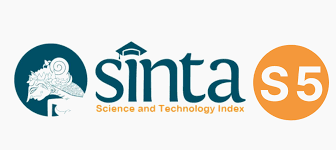Enhancing Practical AI Competency with YOLO 2D Detector Object Localization Technology
DOI:
https://doi.org/10.25170/charitas.v5i01.6754Keywords:
Object Localization, Workshop, YOLO, Brain Tumor Case StudyAbstract
Object locatization is one of important aspect of computer vision, which refers to a system's ability to detect and determine the position of objects within an image. However, general audience practical understanding of object localization is remains limited. To address this issue as a community service team, and organized a workshop focused on YOLO (You Only Look Once)-based object localization. This workshop was conducted free of charge online via the Google Colab platform. The event was successfully carried out and received positive feedback from the participants. This workshop are providing a real studycase through brain tumor detection from image-based approaches, aiming to provide an in-depth experience in object localization while also offering the latest updates on artificial intellegent technology trends based on digital image processing. Based on evaluation results indicated that the majority of participants, who previously had no experience in object detection, were able to understand the fundamental concepts of object localization and apply them directly using the cloud platform. This workshop demonstrates that cloud-based learning approaches utilizing Google Colab and Roboflow are highly effective in bridging the gap between theory and practice in object localization.
References
1. Bisong, E. (2019). Google Colaboratory. In E. Bisong, Building Machine Learning and Deep Learning Models on Google Cloud Platform (pp. 59–64). Apress. https://doi.org/10.1007/978-1-4842-4470-8_7
2. Bochkovskiy, A., Wang, C.-Y., & Liao, H.-Y. M. (2020). YOLOv4: Optimal Speed and Accuracy of Object Detection. https://doi.org/10.48550/ARXIV.2004.10934
3. Budiyanta, N. E., Sereati, C. O., & Manalu, F. R. G. (2022). Processing time increasement of non-rice object detection based on YOLOv3-tiny using Movidius NCS 2 on Raspberry Pi. Bulletin of Electrical Engineering and Informatics, 11(2), 1056–1061. https://doi.org/10.11591/eei.v11i2.3483
4. Chollet, F. (2021). Deep Learning with Python, Second Edition. Manning. https://books.google.co.id/books?id=XHpKEAAAQBAJ
5. Diwan, T., Anirudh, G., & Tembhurne, J. V. (2023). Object detection using YOLO: Challenges, architectural successors, datasets and applications. Multimedia Tools and Applications, 82(6), 9243–9275. https://doi.org/10.1007/s11042-022-13644-y
6. Géron, A. (2019). Hands-on machine learning with Scikit-Learn, Keras, and TensorFlow: Concepts, tools, and techniques to build intelligent systems (Second edition). O’Reilly Media, Inc.
7. Li, Z., Yuan, J., Li, G., Wang, H., Li, X., Li, D., & Wang, X. (2023). RSI-YOLO: Object Detection Method for Remote Sensing Images Based on Improved YOLO. Sensors, 23(14), 6414. https://doi.org/10.3390/s23146414
8. Redmon, J., Divvala, S., Girshick, R., & Farhadi, A. (2016). You Only Look Once: Unified, Real-Time Object Detection. 2016 IEEE Conference on Computer Vision and Pattern Recognition (CVPR), 779–788. https://doi.org/10.1109/CVPR.2016.91
9. Redmon, J., & Farhadi, A. (2018). YOLOv3: An Incremental Improvement. https://doi.org/10.48550/ARXIV.1804.02767
10. Szeliski, R. (2022). Computer Vision: Algorithms and Applications. Springer International Publishing. https://doi.org/10.1007/978-3-030-34372-9
11. Zong, C., Meng, K., Sun, J., & Zhou, Q. (2023). Real Time Object Recognition Based on YOLO Model. 2023 3rd International Conference on Electronic Information Engineering and Computer Science (EIECS), 197–202. https://doi.org/10.1109/EIECS59936.2023.10435392













